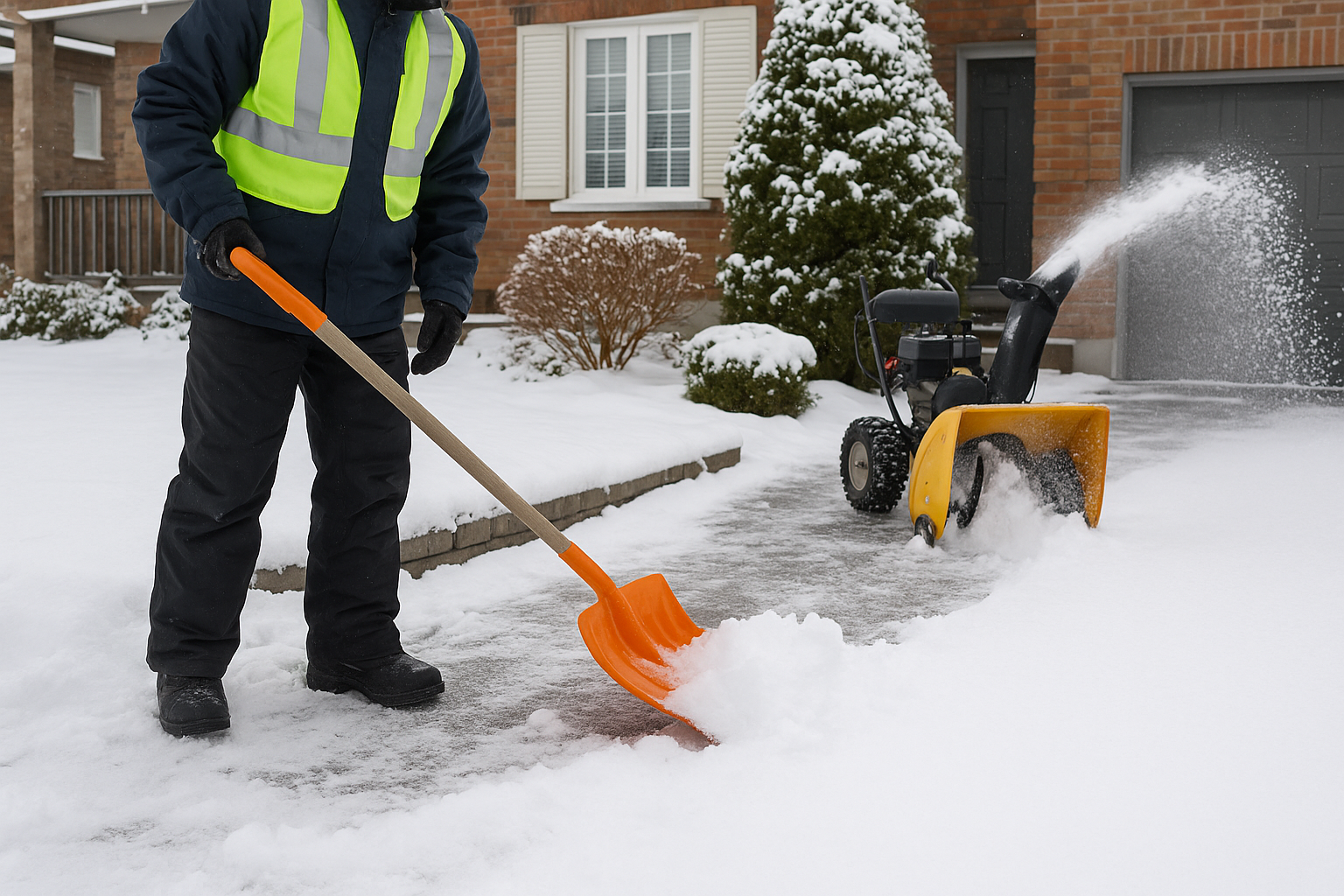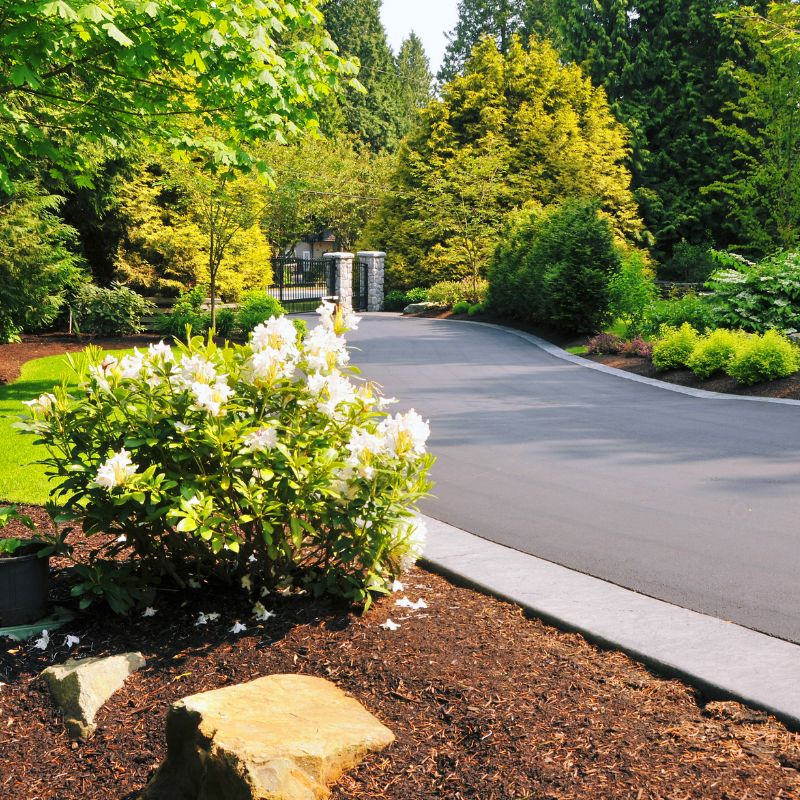Protecting Your Property Through Ontario’s Harsh Winters
For homeowners in Guelph, Ontario, winter weather brings more than snow-covered scenery. Heavy accumulation, repeated freezing, and melt cycles can quietly damage even the best-designed outdoor spaces. Without proper care, lawns, trees, and garden beds may suffer from soil compaction, salt exposure, or structural collapse.
Professional snow management from Garafraxa Turf helps property owners prevent these issues before they start. By applying the same care principles used in their year-round landscaping work, Garafraxa Turf’s winter service ensures that each surface, structure, and planting area remains stable, healthy, and ready for spring.
How Snow and Ice Affect Landscapes
When unmanaged, snow accumulation places enormous pressure on landscape elements. Shrubs and trees can snap under weight. Piled snow may suffocate grass and plants, while uneven melting leads to erosion or pooling near hardscapes. Driveways and walkways can also crack or heave when meltwater freezes and expands beneath them.
Ice buildup is equally destructive. It can block drainage channels and damage the edges of garden beds, creating lasting soil disruption. Over time, these small injuries accumulate—reducing property appearance and overall value.
By contrast, a structured snow management plan prioritizes protection. Guelph landscapers with the right equipment and environmental awareness can move snow safely away from vulnerable areas while maintaining clear, accessible pathways.
The Importance of Professional Snow Management
Snow removal is more than a convenience—it’s an essential part of property maintenance in Ontario. While many homeowners handle light clearing themselves, professional oversight ensures that the full site is protected, not just the driveway.
Garafraxa Turf’s team uses calibrated snow plows, blowers, and surface-safe de-icing materials that protect lawns, stonework, and planted areas. Each site receives a custom plan that accounts for slopes, water flow, and exposure. This reduces the risk of flooding during thaws and prevents hidden ice hazards from forming near entrances or steps.
Clients in nearby communities like Fergus and Elora benefit from the same tailored approach. No two properties are treated alike—every snow management route and technique reflects the specific design and materials of the landscape.
Avoiding the Hidden Costs of Improper Snow Removal
Improper snow removal can lead to expensive spring repairs. Using heavy, uncalibrated equipment or excessive salt can scar lawns, kill plant roots, and stain stone surfaces. When melting begins, soil washout or drainage misalignment often follows.
Garafraxa Turf avoids these problems by treating snow management as an integrated part of landscape maintenance. The same trained crews who handle summer care understand how to preserve turf health and structural balance through the winter. Every action—from plow blade angle to salt application—is calculated to minimize impact while maintaining full safety.
The result: fewer post-winter cleanups, faster spring recovery, and a landscape that remains functional and visually consistent across all seasons.
Extending the Life of Your Landscape Investment
A professional snow management plan supports both immediate safety and long-term value. Landscapes represent a major investment in materials, time, and design. Allowing winter damage to undo that work undermines curb appeal and property return.
By choosing Garafraxa Turf, property owners protect their investment with proactive service and consistent oversight. Driveways, walkways, patios, and lawns remain intact through months of freeze-thaw cycles. When spring arrives, your landscape is ready to grow—without costly regrading, plant replacement, or surface repair.
Regular snow management also improves accessibility. For families and businesses, clear and ice-free surfaces mean safer movement throughout the property. This is particularly important for multi-surface layouts, where steps, retaining walls, and garden edges can become accident zones when not managed properly.
Year-Round Landscape Continuity
Garafraxa Turf operates as a full-service landscaping and property care company. Their winter services are designed to align with spring and summer maintenance programs, creating seamless continuity across seasons.
This year-round approach benefits clients who want consistent results and reliable communication from a single, trusted team. Instead of hiring separate providers for summer design and winter clearing, homeowners can rely on one source for everything—from soil preparation to snow removal.
Their process includes:
Pre-winter inspections to identify high-risk areas
On-call snow and ice management during storms
Controlled snow placement to protect gardens and surfaces
Post-storm reviews to maintain drainage and structure
Through this integrated system, Garafraxa Turf keeps landscapes in Guelph, Fergus, and Elora looking healthy and organized regardless of weather.
Environmental Considerations and Sustainable Practices
Effective snow management must also consider environmental responsibility. Overuse of salt and chemical de-icers can damage nearby vegetation and contaminate local water sources. Garafraxa Turf prioritizes sustainability through targeted, minimal use of ice-melting agents and by selecting products that balance safety with soil protection.
Their approach ensures that lawns, gardens, and natural areas remain healthy while maintaining compliance with local environmental standards. It’s a measured balance between property care and ecological responsibility—a core principle of professional landscape management.
The Local Advantage: Guelph Landscapers Who Know the Climate
Guelph and surrounding regions experience significant winter variability, with freeze-thaw patterns that challenge both new and mature landscapes. Working with local professionals who understand these conditions makes a measurable difference.
Garafraxa Turf’s crews know how local soil types respond to compaction and how snowmelt interacts with different materials like pavers, asphalt, and interlock. This local insight leads to smarter snow routing, reduced surface damage, and a landscape that consistently performs year after year.
Whether maintaining a residential property in Guelph or managing commercial grounds in Fergus or Elora, Garafraxa Turf combines precision with experience to deliver reliable results through the harshest weather.
Contact Garafraxa Turf for professional snow management and protect your landscape investment this winter. Serving Guelph, Fergus, and Elora with reliable, year-round property care.










